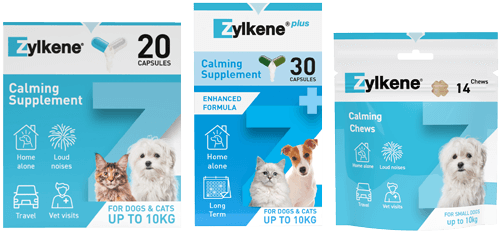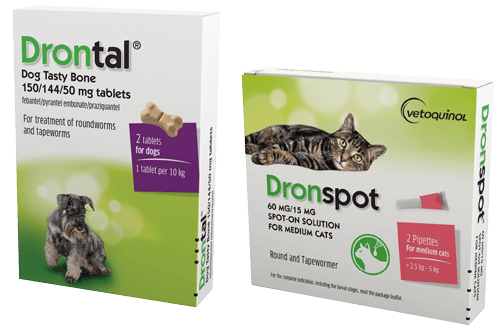
Moving house can be a hectic time in your life, but don’t forget the change can cause your pet to feel uneasy too and they easily get forgotten in all the chaos. There are things you can do to help; check out our tips below to help your move go smoothly.
Your cat or dog may start to experience uneasiness well before the actual moving day. They will sense something is up when you start packing boxes. Give them Zylkene calming supplement to help them cope. Ensure you start giving Zylkene a few days before you start packing.
Keep your pet in one room whilst the hustle and bustle of the move is going on. A familiar room is preferable with a doggy den for dogs to hide in (see our guide how to build the pawfect doggie den) and resources if you have a cat (see our checklist for cat resources). Put your cat in their basket or the dog in the car as the last thing you do. Set up one room at the new house as quickly as possible with familiar objects while your cat or dog waits in the car or the basket. For dogs ensure you have a den and for cats all necessary resources – including their favourite toys for familiar smells. Vacuum the room before you bring your pet inside. This will help remove traces of previous pets’ hair and smells and help to rid the room of any unwanted parasite visitors. Keep your pet confined to this room while the rest of the house is sorted. Make sure the room is a comfortable temperature and provide a meal and a favourite treat. A new toy can be good for distracting dogs and a cardboard box hidey hole is a must for cats. Ensure that everybody involved in the move is aware your cat or dog is shut in the room, ensure they’re not accidentally let out! Once the moving is done, let your cat or dog out of their room and allow them to explore their new home in their own time.
Keep using Zylkene calming supplements until you are completely convinced your pet is comfortable in their new home. For some this may be days, for others it could take months.
This allows them to bond with the new environment. Whilst they are indoors, ensure they have access to fresh water and make sure you play with them as much as possible to keep them active and minimise frustration.
It’s important to establish a routine quickly (with both dogs and cats) in order to ensure they feel secure. Make sure feeding, walks, playtimes etc. are at regular times.
Have as many familiar objects around as possible. For cats, take a clean cloth and rub the side of their face to scent it with their pheromone. Then rub the cloth at cat height in each room. Do this daily to build up a nice familiar smell.
For Cats – Choose a quiet time to let your cat out for the first time and go outside with them. Let them explore a little then call them back for food. Repeat this process a few times over a few days but let the exploration time be a little longer each time.
For dogs – Keep them on the lead for the first few walks until the new surroundings are familiar and you’re happy the environment is secure enough to let them off, providing it is safe to do so. Practice recall on the lead a few times to be sure they’re concentrating on you.
Ensure you have plenty of time to dedicate to your cat or dog, don’t be distracted during the process!
Enclosed spaces – make sure there are enclosed spaces the first time they go out, and cats would prefer plenty of ‘cover’ or hiding places, as they don’t like open spaces.
If you haven’t moved far it may be tempting for your pet to return to their old home. This is likely to be more of a problem with cats as they are free roaming. If this happens, it means they haven’t bonded well enough with their new home and you may need to keep them in for a little longer. You could also try doing more to create familiar smells as described. It may be wise to ask the residents in your old house NOT to feed or engage with the pet if they show up and give them your phone number. This means you can go and collect them if necessary.
Small meals ensure that the new house is regularly associated with positive events.
If the techniques don’t seem to be working or you’re worried the problem is serious, you don’t have to solve the problem alone. Do seek professional advice from your veterinary practice or qualified animal behaviourist.
From calm to comfort,
hygiene to health.
Every step of the way











Vetoquinol UK Limited
Steadings Barn, Pury Hill Business Park, Nr Alderton, Towcester, Northamptonshire NN12 7LS
© Zylkene 2024
*Non-prescription calming supplements, Kynetec data – January 2024